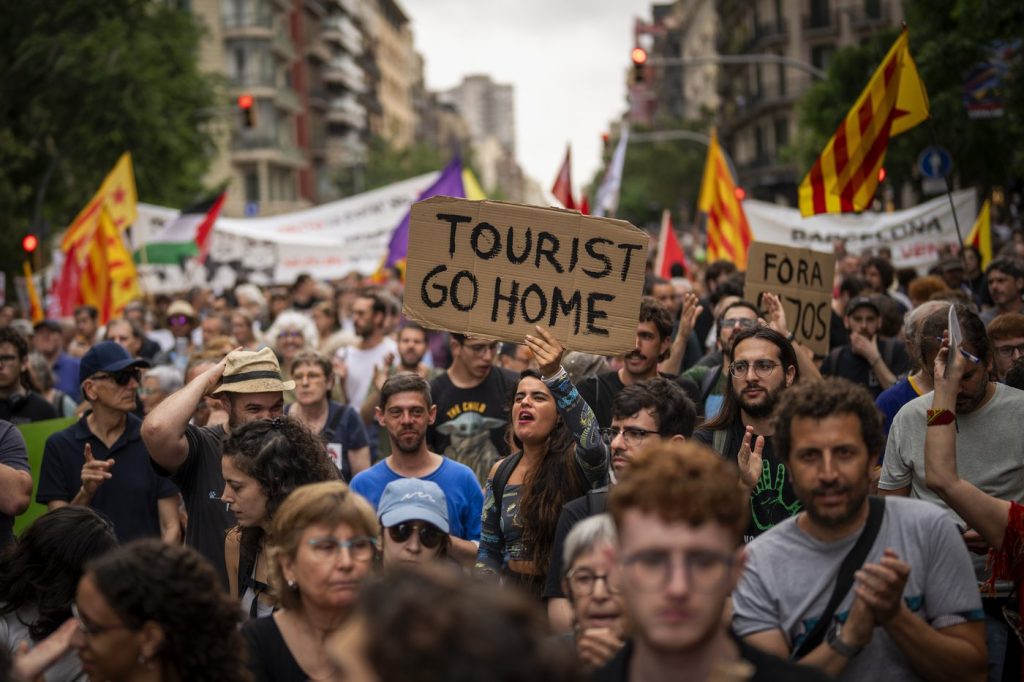MADRID (AP) Europe's tourism industry is experiencing unprecedented growth, with 747 million international travelers flocking to the continent last year alone, according to the U.N.'s World Tourism Barometer. This staggering number significantly outstrips other world regions, as Southern and Western Europe attracted more than 70% of these visitors. While Europe is often described as the world's museum, the surge in visitor numbers has sparked serious concerns about overtourism.
The influx of tourists is amplified by several factors, including budget flights, the influence of social media, user-friendly travel planning facilitated by artificial intelligence, and a strong economic climate in wealthier countries, despite prevailing geopolitical tensions. Visitors from countries such as the U.S., Japan, China, and the U.K. consistently generate a high volume of international trips, particularly to iconic destinations like Barcelona in Spain and Venice in Italy. The uneven demand for housing and essential resources like water arises from this seasonal crowding.
Despite the popular criticism surrounding tourism overflow, some officials believe the situation can be effectively managed through improved infrastructure. Daniela Santanchè, Italy's Tourism Minister, expressed confidence in leveraging AI to better manage tourist flows at high-traffic locations such as Florence's Uffizi Galleries. By allowing tourists to purchase tickets in advance, potential surges at these coveted sites could be mitigated. Santanchè also argued against the notion that Italy has an excess tourism problem, noting that tourist visits are concentrated within just 4% of the country's territory.
Countries around the Mediterranean are at the forefront of overtourism challenges. France, the leading international tourist destination, welcomed 100 million travelers last year, while Spain attracted nearly 94 million, nearly doubling its resident population. Protests in Spain have intensified, particularly in Barcelona, where a water gun has become a symbol of the anti-tourism movement. Activists highlight that every new tourist displaces a local resident, pushing back against the overwhelming tourist presence.
The pressure on infrastructure is notably acute in Spain's Canary and Balearic Islands, both of which host a combined population of under 5 million but welcomed over 15 million visitors last year. Elsewhere in Italy, hotspots such as Venice, Rome, Capri, and Verona experience significant overcrowding, and even the Amalfi Coast has resorted to ride-hailing apps like Uber, which now offer private helicopter and boat rides during peak tourist seasons.
Greece, which saw nearly four times its resident population in visitors last year, faces similar strains on its resources, particularly during the summer months, impacting water availability, housing, and energy on popular islands like Santorini and Mykonos. Concerns over the ramifications of overtourism are echoed throughout Spain, where anti-tourism activists argue that skyrocketing housing costs in city centers stem from an increase in short-term rental properties. The unique character of neighborhoods that initially attracted tourists is being altered, with local shops giving way to souvenir stores and international chains.
In response to the escalating challenges posed by overtourism, various measures are being implemented. Spain’s government has recognized the crisis as its most significant governance challenge and has recently mandated Airbnb to remove almost 66,000 properties violating local regulations. Additionally, Barcelona is set to phase out all of its 10,000 licensed short-term rentals by 2028 to protect housing for residents.
In Greece, new taxes on cruise visitors are being introduced to manage tourist flows, with fees set at €20 for popular islands like Mykonos and €5 for less-visited locations like Samos. To combat water issues, tankers from mainland Greece are assisting dry islands, and desalination technology is being deployed. On a practical level, staggered visiting hours at the Acropolis aim to enhance the experience and mitigate overcrowding.
Additionally, Venice has reintroduced an entry fee for day-trippers, which can range between €5 and €10 during peak season. These measures are part of a broader effort by European authorities to strike a balance between sustaining tourism and preserving the quality of life for local residents.










